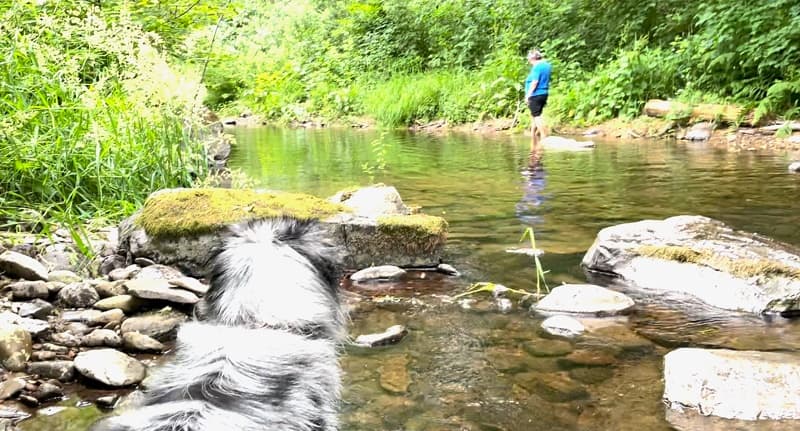Welcome to Jan Rising, who is our new Board Recording Secretary! Jan moved to Eugene…

Along with many other critical environmental problems, water is becoming one of the most crucial and scarce resources we need for life on earth. September is typically the driest time of the year in Oregon, and water supplies had already been very low throughout the state. Having a supply of water in the dry season is critical for people, the garden, and wildlife. It is important to conserve water to stretch the supplies into this hot-dry time of the year. Our property is at 1,000-foot elevation in the SW hills of Eugene, and we are on a well for water. Our growing season starts a little later than in the Willamette Valley, but stretches into October or until the first frost. Since we are on a hill, my husband set up catchment water tanks that hold water we collect off the roofs of the house and shop during the rainy season. The flow is gravity-fed. We are using the tank water to irrigate the garden and orchard in order to save our well water for household uses. I’m very excited to have this bonus water supply, and garden watering has become a daily ritual.
Watering the garden gives me a great excuse to spend time outside each day, checking out the birds on our property. In September the birds are often juvenile juncos, towhees, and sparrows (both White-crowned and Song), using my garden plot to look for insects. The juvenile goldfinches, House Finches, and Purple Finches pick through the dried sunflower heads, but they also “graze” the adjoining field for seeds in the tall grass. I hear small family flocks of Cedar Waxwings and Western Tanagers. Often the tanagers will come to our water course for a drink in the afternoon, which gives us a great look at these beautiful birds that are normally high up in the trees. While watering, I see mixed flocks of chickadees and warblers working through the oak and fir trees, foraging for insects. A few lingering Rufous Hummingbird juveniles will sometimes come down to my water hose for a refreshing shower, giving me up-close looks at these speedy rascals, who quickly fly off to chase another bird that comes too close to their patch of flowers. We also put pans of water down, away from the house so shyer animals can find water here. We know fox and bobcat visit this small watering pool.
The precious saved water source provides this basic need and gives us a new way to enhance the property for our bird and wildlife neighbors. Individual efforts and choices can make a difference in the survival of our bird and wildlife neighbors. It is not hard to do these small things and the result is very rewarding and satisfying.
For more information on minimizing water waste, see: greenlivingpdx.com/8-ways-to-reduce-water-waste/
–Maeve Sowles




